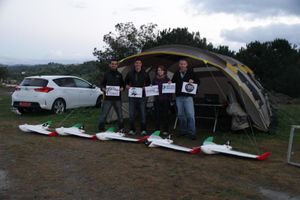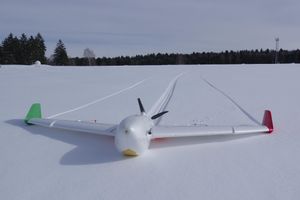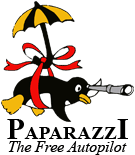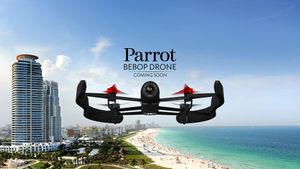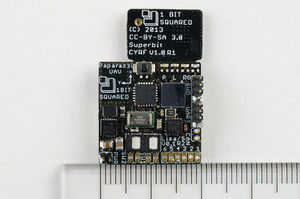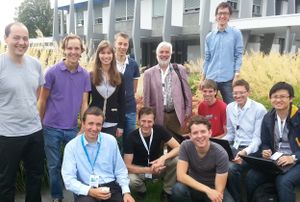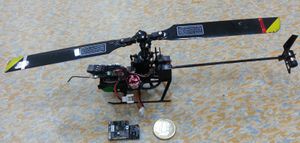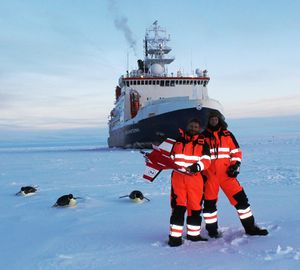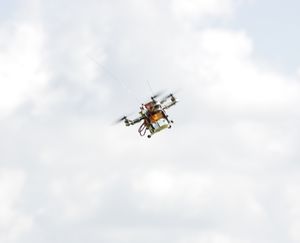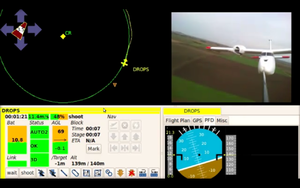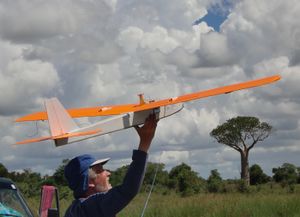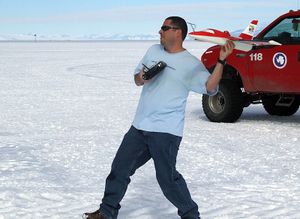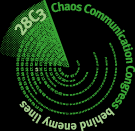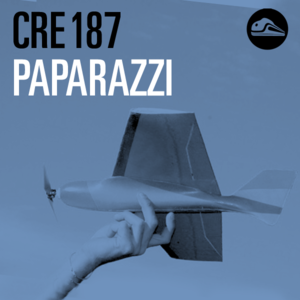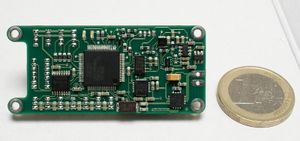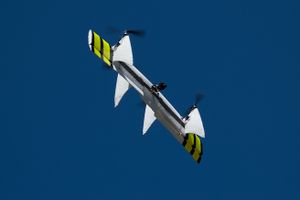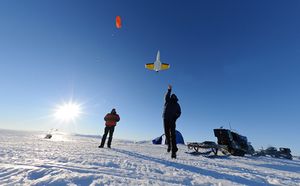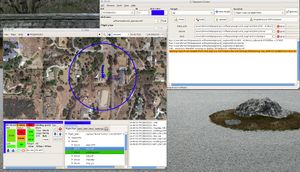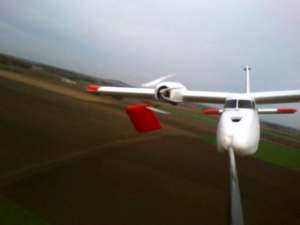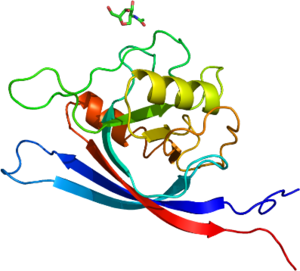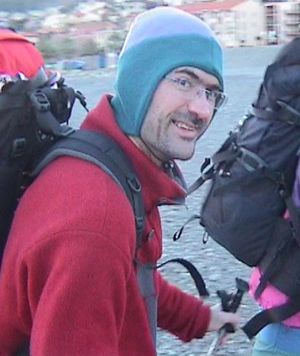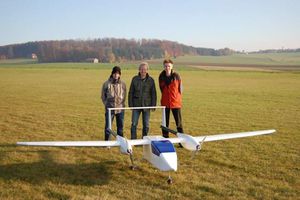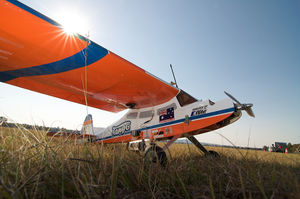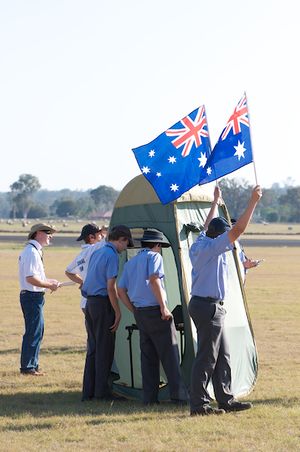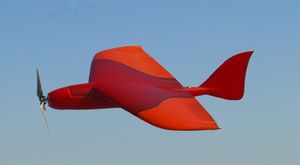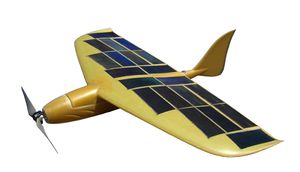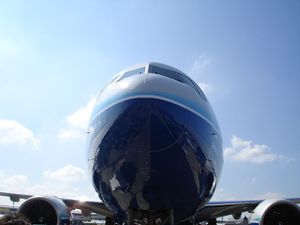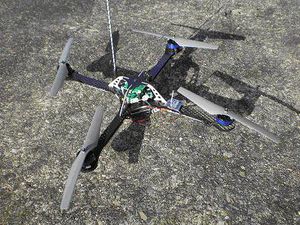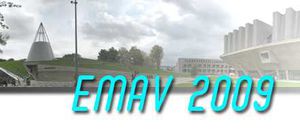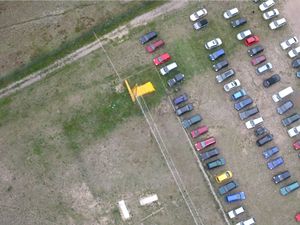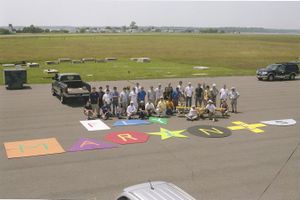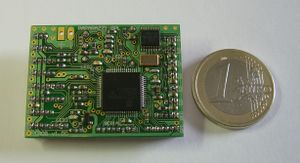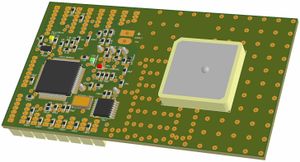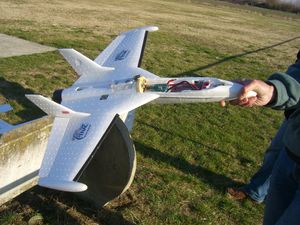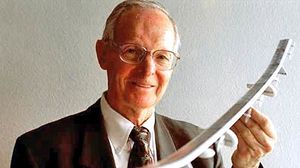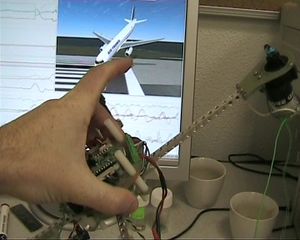March, 2015
|
|
The National Center for Meteorological Research (CNRM-GAME, Toulouse, France) conducted an airborne experiment in Cyprus in March 2015 as part of the BACCHUS project. The main goal of CNRM's contribution is to complement the ground-based observations of aerosol and cloud condensation nuclei with airborne measurements to characterize the vertical distribution of aerosol, radiative fluxes, 3D wind vectors and meteorological state parameters. As payloads were limited to 500g (and total weight < 2.5kg), multiple RPAS (remotely piloted aircraft systems) were instrumented for a specific scientific focus. The Paparazzi system was used to navigate the RPAS. During the campaign, airborne measurements were taken over 4 weeks (5 March to 2 April, 2015) with 52 research flights and 38 hours of flight time. Vertical profile were regularly sampled up to 2100 m.asl (limited by authorized flight ceiling) and often observed the layers of dust originating from the Arabian Peninsula and the Sahara Desert. RPAS profiles generally show a well-mixed boundary layer and compare well with ground-based LIDAR observations. Flights below and within clouds were also coordinated with satellite overpasses to perform 'top-down' closure of cloud micro-physical properties.
|
February 2-4, 2015
|
|
The Enac team has been flying several aircraft (X6-Skywalker, Easystar, Funjet) at the Atmospheric Research Center of Lannemezan, close to the Pyrenees in the south of France. The goal was to prepare several meteorological planes for research studies held by Meteo France that will be held next month in Cyprus. Weather conditions was pretty harsh some times, with snow and icy fog, but also gave some really nice pictures, and of course interesting flights up to 1400m AGL with meteorological instruments.
See this video of the previous campaign: https://www.youtube.com/watch?v=WOxEK0GESeQ
Or this other video of the first tests of automatic bungee takeoff for the heavier planes (up to 2.5kg): https://www.youtube.com/watch?v=4RjtJ3CbZ60
|
January 5th, 2015
|
|
NEW RELEASE!
Paparazzi Development Team is pleased to announce the release of a brand new version of Paparazzi; v5.4, giving you the option to enjoy lots of new features and improvements, happy new year!
Curious to know what is added and improved, go herefor an overview. For your enjoyment to view what all those changes look like, click here
If you are already using paparazzi with Git, to enjoy all improvements you can switch to this new version via:
git remote update && git checkout v5.4.
If you are new to Paparazzi and want to join in flying it, you can you can simpy download a tarball or get the source code via:
git clone https://github.com/paparazzi/paparazzi.git -b v5.4.
|
November 12th, 2014
|
|
Parrot Bebop paparazzi integration
As you know paparazzi is very modular platform. To show the world how modular we are, we work hard on implementing paparazzi into the Parrot Bebop. At the Micro Aerial Vehicle Laboratory (MAVLab) of Delft University of Technology faculty Aerospace engineering (TU Delft) we received a pre-production model of the Bebop. We do our best to have paparazzi integrated before the launch of the Bebop. If you want to follow the progress check our (youtube channel)
After 4 hours after reception of the Bebop
https://www.youtube.com/watch?v=HEa9lcDIO2g
8 hours later after hacking the ESC check-sum First Flight!!!!
https://www.youtube.com/watch?v=duH9-KP7kOE&list=UUGS-Ra1fPexk01KYIBeySRQ
4 hours later first autonomous outdoor flight in paparazzi !!!
https://www.youtube.com/watch?edit=vd&v=y0u9eLdizjw
|
August 28th, 2014
|
|
NEW RELEASE!
Paparazzi Development Team is pleased to announce the release of the Paparazzi v5.2 stable version with lots of new features and bugfixes.
See the CHANGELOG for an overview of new features and bugfixes.
See the Release Upgrades page for hints on configuration changes that may be required if you are moving to v5.2 from v5.0.
If you are already using paparazzi with Git, you can switch to this new branch with
git remote update && git checkout v5.2.
For new user, you can download a tarball or get the source code with
git clone https://github.com/paparazzi/paparazzi.git -b v5.2.
|
August 12th, 2014
|
|
The Micro Aerial Vehicle Laboratory (MAVLab) of Delft University of Technology (TU Delft) is proud the present the 2014 International Micro Air Vehicle Conference (IMAV 2014), now offering the possibility of attending the conference by live stream free-of-cost. The live stream will support most platforms showing innovative keynotes of pioneers in the industry as well as the current state-of-the-art presented by many researchers working on MAV's. The schedule is published on the website of the conference.
Tuesday, August 12th, 2014
https://www.youtube.com/watch?v=ahqIv6_PR_I
Thursday, August 14th, 2014
https://www.youtube.com/watch?v=jzPwSVq5R84
Friday, August 15th, 2014
https://www.youtube.com/watch?v=9CdmJ8ES1qs
|
July 26th, 2014
|
|
We are now part of the Gitter.im beta. Join our paparazzi/discuss channel!
|
July 25th, 2014
|
|
The Android application PPRZonDroid, a GCS extension for Android devices that you can use to control Paparazzi aircraft, is now available on Google Play.
|
January 27th, 2014
|
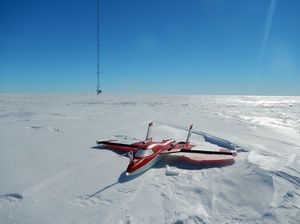 SUMO on the Ross Ice Shelf John Cassano from the University of Colorado has been flying Paparazzi equipped SUMOs in a remote camp in Antarctica over the last two weeks. See his blog for a detailed report.
|
January 8th, 2014
|
|
To make documenting and learning about Paparazzi easier we have updated the Wiki to the latest Mediawiki version (1.22). This new wiki provides very improved search of the many articles, as well as video embed tags. You can easily embed a youtube video to your article by writing {{#ev:youtubehd|videoID}}, or a vimeo video by adding {{#ev:vimeo|videoID}}. The wiki is hosted on a new dedicated Paparazzi UAV server so it should be faster now too.
|
December 27-30th, 2013
|
|
The 30C3 – 30th Chaos Communication Congress was held in the Congress Center Hamburg December 2013. We were present there as part of the Paparazzi UAV Assembly.
|
November 27th, 2013
|
|
Due to popular demand, Lisa/S and SuperbitRF is available for early pre-order from 1 BIT SQUARED.
|
October 1st, 2013
|
|
IMAV2013!
The Mavlab team of TU Delft consisted of 12 people coming from aerospace, computer science, embedded programming and artificial intelligence. Thanks to the enormous team efforts in the last months, the team has won prizes in all the categories in which it participated:
Outdoor: 1st price
with an autonomous swarm of 12 MAVs operated by a single operator. The MAVs only had to be plugged in and started their own flight plan, while the operator could monitor their mission status and intervene where necessary. Our participation featured four main innovations: (1) a single operator for 12 MAVs, 3 hybrid UAVs, 7 Parrot AR drones and 2 mini-quadrotors, (2) onboard vision processing on the AR drone with Paparazzi, (3) hybrid UAVs able to fly under any attitude, and (4) the world's smallest open source autopilot, Lisa S (2 grams). The wind conditions were terrible on the outdoor competition day, with 6 Bft, and most teams had their MAVs blown away. Everybody was impressed how the hybrid UAVs were able to cope nicely with these conditions and were still able to perform a precision landing.
Indoor Operations: 1st price
Indoor Autonomy: 3rd price
Indoor the mission consisted of elements such as flying through a window and obstacle zone. We were the only participants to use a flapping wing MAV, which was in size and weight by far the smallest competing MAV (28 cm wing span, 20g). We demonstrated some autonomous flight capabilities such as autonomous takeoff (a world's first), and the capabilities of the DelFly as a First Person View-platform, where the operator flies the MAV on basis of its onboard images. All elements were performed by the operator.
EmbedVideo does not recognize the video service "youtubehd".
|
August 26th, 2013
|
|
PRESS RELEASE!
TU Delft researchers design and build the world’s smallest autopilot for micro aircraft
Researcher Bart Remes and his team of the Micro Aerial Vehicle Laboratory at the TU Delft faculty of Aerospace Engineering have designed, built and tested the world’s smallest open source autopilot for small unmanned aircraft. A smaller – and lighter – autopilot allows these small flying robots to fly longer, fit into narrower spaces or carry more payloads, such as cameras. That makes them more suitable to be used in for example rescue operations. Remes: “Our aim? Make MAVs so small and light that every fireman can fit one in his pocket.”
More information:
Hardware electronics will be sold (from January 2014) by 1bitsquared
Lisa/S autpilot board
SuperbitRF telemetry module
|
August 13th, 2013
|
|
Over the last 9 weeks the Paparazzi autopilot has been used for operations with remotely piloted aircraft from the Finnish Meteorological Institute for scientific research on board the R.V. Polarstern in the Weddell Sea/Antarctica. You can see the course and read a short report on the homepage of the Alfred Wegener Institut.
Instructions on how to build your own small unmanned meteorological observer (SUMO) can be found here in the Wiki.
|
June 17th, 2013
|
|
NEW RELEASE!
For the opening of the Paris Air Show at Le Bourget, the Paparazzi Development Team is pleased to announce the release of the Paparazzi v5.0 stable version, including the support of the Parrot AR.Drone2. See this page for more instructions.
See the changelog for an overview of new features and bugfixes.
See the Release Upgrades page for hints on configuration changes that may be required if you are moving to v5.0.0 from v4.2.0.
If you are already using paparazzi with Git, you can switch to this new branch with
git remote update && git checkout v5.0.
For new user, you can download a tarball or get the source code with
git clone https://github.com/paparazzi/paparazzi.git && git checkout -b v5.0 origin/v5.0.
|
January 22nd, 2013
|
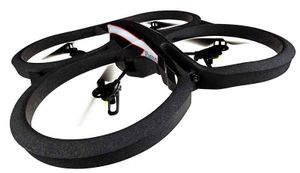 Paparazzi on the Parrot AR Drone 2 Parrot AR Drone flies autonomous
At the TU Delft university of technology student teams made the impossible; possible. Now you can turn your AR Drone v2 into an autonomous drone, controlled by Paparazzi autopilot software. It's simple, Insert GPS receiver into USB port, build and upload your flightplan via WiFi, and you are done! No hardware modification needed.
Detailed instructions to get your own drone fly with a Paparazzi autopilot brain can be found by following this link
...and remember, it is a Wiki, you are invited to improve the contents, as a matter of fact, we would love it!
|
December 12th, 2012
|
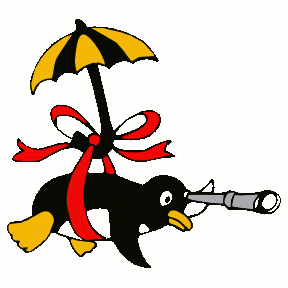 Paparazzi The Free Autopilot v4.2 released NEW RELEASE!
Just before the end of the world, discover Paparazzi v4.2.0 stable version.
Based on the last stable branch v4.0, this new release offer several improvements, especially the total energy control developed by TUDelft. See the changelog for an overview of new features and bugfixes.
If you are already using paparazzi with Git, you can switch to this new branch with
git remote update && git checkout v4.2.
For new user, it will be the default branch when getting the source code from Github. You can also download a tarball or Zip file of the v4.2.0_stable source code.
|
July 26th, 2012
|
|
Paparazzi was at the DefCon 20 conference in Las Vegas, USA from July 26th - 29th 2012 and presented the project.
|
July 26th, 2012
|
 Paparazzi The Free Autopilot NEW RELEASE!
The Paparazzi Development Team is pleased to announce the release of the Paparazzi v4.0 stable version.
After several months of testing and debugging, the release preparation branch v3.9 has been released as v4.0. See the changelog for an overview of new features and bugfixes.
If you are already using paparazzi with Git, you can switch to this new branch with
git remote update && git checkout v4.0.
For new user, it will be the default branch when getting the source code from Github. You can also download a tarball or Zip file of the v4.0_stable source code.
|
July 2-6th, 2012
|
|
Blender, the small but deserving quadrotor of ENAC Paparazzi Team took the 1st place in "Outdoor autonomy" and 3rd place in "Outdoor dynamics" during IMAV2012 competition in Braunschweig (Germany). Completing its missions with overflowing enthusiasm thanks to the new NavGo autopilot. NavGo is the latest in the long line of award winning Paparazzi hardware available. See the list of Paparazzi hardware here.
|
July 6th, 2012
|
|
ATMOS, a hybrid airplane-quadrotor developed at the MAVlab of TU-Delft, was awarded third place (out of 140) in the UAVForge Competition. There were more than 140 initial contestants and after several selection rounds with only 12 finalists, the paparazzi Lisa/M powered ATMOS was one of the few that could actually make it to the remote target site miles away in an RF unfriendly environment. No team fully completed the baseline objectives which is why no prices were issued. The vertical takeoff and landing, together with long range thanks to the wing and flexibility thanks to opensource paparazzi were key factors in this event [1].
But probably more important, the development of ATMOS has added a new code-base to paparazzi to enable the control of any hybrid multi-lifting device vehicle. ATMOS can take-off vertically as a quadrotor, transition to full forward flight as an airplane but also fly in any intermediate transition stage fully autonomously. So let your imagination go loose!
|
May 9th, 2012
|
|
In order to improve the development workflow and provide stable releases we have changed our git branching model.
The branch "master" is now our development branch.
- The "dev" branch was renamed to the release preparation branch "v3.9". Switch to this branch if you want stable code.
- "master" was reset to the previous "locm3" branch, where development will happen now with libopencm3 for the STM32 architecture.
Please see the RepositoryStructure page for more details.
As soon as we are ready to release v4.0 the will be tarballs available if you don't want to use Git.
|
May 8th, 2012
|
|
A lot of cool stuff is done with paparazzi driven UAV`s
To share the world what the paparazzi community is doing a youtube video play list generated. If you want your video in there send a youtube link to the mailing list.
|
April 9th, 2012
|
|
In March 2012, Paparazzi flew in southern Madagascar in the frame of a multi-university project to study and improve the ecosystem in one of the poorest regions of the world (Project). More than 4000 hectares of farm and grassland were photographed in visible and near infrared spectra. More than 8500 photos were taken. Surely one of the biggest missions for science ever flown with Paparazzi.
|
March 7th, 2012
|
|
In the Antarctic summer of 2011/2012 two teams flew Paparazzi-driven UAS on the southernmost continent. The University of Bergen flew at the Norwegian Troll station (video) and the University of Colorado near the US McMurdo station (blog, blog). They measured temperature, humidity, pressure, infrared radiation and wind with a Multiplex Funjet plane.
|
December 26th, 2011
|
|
We had a table at the 28C3 conference.
|
December 25th, 2011
|
|
Martin Müller gave a great interview about the history and the inner workings of Paparazzi on CRE Podcast.
|
October 5th, 2011
|
|
ENAC Team Umarim V1.0 autopilot is now released: LPC based, on-board IMU & barometer, narrow fuselage form factor (56x25mm) and lightweight (9gr) are its main features. Add your favorite GPS receiver and it will fit in your stupidly thin light UAV prototype. But it will also do the job for a big fat one. More info here...
|
September 18th, 2011
|
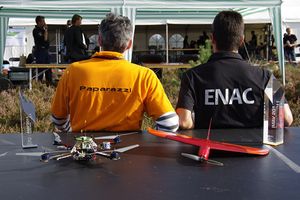 IMAV 2011 Outdoor Competition This year IMAV 2011 went really well for all of the participants, we have seen lots of successful flights. ENAC Paparazzi Team took the 2nd place in general "Outdoor Challenge" and Fire Storm demonstrated 105+ minutes of flight and took the "Best Outdoor Endurance Award". He was waiting this day for 2 years since the cancelation of IMAV09.
As an additional information, Fire Storm flew its endurance mission with the new Umarim V1.0 autopilot board which will be released soon.
|
August 31st, 2011
|
|
Paparazzi is used in the Quadshot: A blend between a quadrocopter and a flying wing. The Quadshot and Paparazzi are also featured in an episode of Hak5. You can also skip directly to the interview with Piotr talking about how Paparazzi is used in the Quadshot, and briefly explains the XML airframe file and the GCS.
|
February 15th, 2011
|
|
Paparazzi has flown on the southernmost continent: Antarctica. Scientists from the Finnish Meteorological Institute took three modified Funjets to the Finnish Aboa station and brought them back safely after more than 25 flights. They measured temperature, humidity, pressure, wind direction and speed in altitudes up to 1000m.
|
February 10th, 2011
|
|
Paparazzi now on OS X. Thanks to the tireless efforts of Eric and Bernard we can all run Paparazzi on OS X. Stay tuned Windows fans. Paparazzi on Windows is coming soon.
|
November 26th, 2010
|
|
There is a video available that shows how Paparazzis adaptive control loops keep a Twinstar in the air that drops 30% of its right wing with 50% of the aileron and then also switches the right engine off. Another video shows a Paparazzi quadcopter using adaptive control to stay level after dropping 50% of its total weight.
|
November 19th, 2010
|
|
WE MOVED TO GIT!
The paparazzi software repository now has a new happy life on github:
https://github.com/paparazzi/paparazzi
We believe the switch from Subversion to the fast git version control system will make development easier, faster and more fun. It also makes it easier for YOU to contribute. You can easily fork paparazzi on github, commit your bugfixes and new features and send us a pull request.
More info on how to get the paparazzi code from github can be found here.
We also want to encourage you to submit bugs or feature requests on the simple github issue tracker.
|
|
August, 2010
|
|
After many years of development, so many new autopilot boards and aircraft types have been added that a sourcecode reorganization was needed. This undertaking is started and will simplify the continuous evolution of the project.
To benefit from these important changes, it only requires you to update your airframe configuration document once. After you have updated, you should not notice the significant reorganization that is going on behind the scenes. This change will benefit your aircrafts flying successfully for the years to come. The required changes are described on Update Your Airframe Configuration.
At this point several developments are blocked because of this. Therefor we kindly request you to upgrade your airframe configuration documents as soon as possible and thank you in advance for doing so.
|
|
May 22th, 2010
|
|
Pascal Brisset, also known as Hecto, and the father of the Paparazzi project died in an accident while climbing in the Pyrénées mountains in the south of France.
He had dedicated the last seven years of his life to the success of the project. He was taking care by himself of a huge part of the project. To name only a few : development and maintenance of the entire ground segment, navigation and flight plan algorithms, code generation and build system, distribution packaging, server infrastructure...
To express your grief, you may want to leave a note on his wiki page
In respect for his commitment, the Paparazzi project must go on and volunteers wanting to take over tasks are hereby asked to do so.
|
|
February 19th, 2010
|
|
The Institute of space systems of University of Stuttgart is using the paparazzi system for large remote sensing aircrafts.
The missions include basic research and environmental monitoring. Payloads of up to 7kg are carried.
More information can be found on the Wiki page.
|
|
September 30th, 2009
|
|
Paparazzi was a big success at the 2009 UAV Outback Challenge held at Kingaroy Airport, Queensland, Australia, Sep. 28-30.
Team "Look mAh, no hands!" representing Brisbane Grammar School, won the 'Robot Airborne Delivery Challenge' placing 1st, after performing an autonomous mission phase including autonomous payload release. The team consisted of four members in their senior years of high-school, and was led by team captain Ben Paratz.
Many thanks to the paparazzi community, not only for the autopilot itself but for the assistance that was enthusiastically given whenever needed.
Link to competition
|
|
September 24th, 2009
|
|
EMAV09 has already passed, now it is time to reveal our (ENAC-ISAE) new designs:
- Fire-Storm a 50cm wingspan MAV.
- Solar-Storm a 50cm wingspan MAV with hybrid power supply (solar and batteries).
|
|
June 20th, 2009
The USU-OSAM Paparazzi team won the 1st place in the 7th AUVSI (Association for Unmanned Vehicle Systems International) Student Unmanned Aircraft System Competition (18 teams total). The competition was held at Webster Field, Maryland, Jun. 17-20. The honor also goes to all the Paparazzi community, especially the developers.
Link to competition
|
June 19th, 2009
|
|
The Paparazzi System has been shown at Paris Le Bourget Airshow by three companies:
|
May 26th, 2009
|
| ENAC / Paparazzi has won the ONERA-DGA Challenge with a quadrotor. Twelve teams of French Universities out of 19 were chosen by ONERA-DGA to participate to this two years contest. ENAC designed a Paparazzi equipped Asctec quadrotor with an IMU developed in its lab.
|
April 7th, 2009
|
|
Dear Paparazzi's, the registration for EMAV09 is now open at http://www.emav09.org/. We look forward to meeting many paparazzi teams at this yearly event.
|
March 24, 2009
|
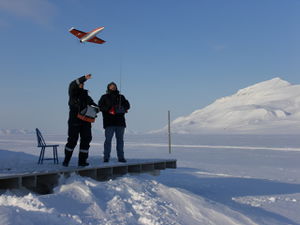 Funjet launch on Spitsbergen We were back in the Arctic flying Paparazzi aircrafts on Svalbard (N78° E15°) doing research with the Geophysical Institute of the University of Bergen/Norway. There are two teams operating near Longyearbyen, one on the apron of Longyearbyen airport (LYR) and the other at the old northern lights research station in Adventdalen. We had permission to fly up to 1500m outside the airport opening times. The Paparazzi aircrafts work perfectly...for humans it is just a little cold. Last night we flew having -32°C (-25°F) on the ground. There is a video showing a 1500m vertical profile flight.
|
February 16th, 2009
|
| We have a new forum to talk about this project. Please visit and participate http://www.azoreanuav.com/forum . Please, vote in the next link to continue with the forum or not. http://www.azoreanuav.com/forum/viewtopic.php?f=2&t=7
|
February 9th, 2009
|
| 3 ENAC students have released a Graphical control application for Paparazzi on Mobile phone using Java technoligies. Check the Ipodrom project page for more details.
|
January 19, 2009
|
|
Paparazzi Developers,
This is to announce a Call for Papers for the 2009 ASME/IEEE International Conference on Mechatronic and Embedded Systems and Applications (MESA09), part of ASME IDETC09. The conference is to be held August 30 - September 2, 2009 at San Diego Convention Center. This Call for Papers is specific to the Session chaired by myself, Antoine Drouin , and Anton Kochevar. This topic of this session is " Open Source UAV Autopilots: Status and Progression", part of a symposium of MESA09 called "Small Unmanned Aerial Vehicle Technologies and Applications (SUAVTA)". This Technical Session is meant to be a session that will focus on Paparazzi, the topics can include specific features developed for Paparazzi or applications using Paparazzi along with other innovative aspects or uses of Paparazzi. We hope to make this one of the largest and best conferences dealing with Paparazzi. Please help us to promote Paparazzi and bring this amazing project to even more people. Full paper deadline is Feb. 27, 2009 using the online submission system.
Conference Website: https://www.asmeconferences.org/IDETC09/ (click MESA09, then, UAV Symposium, then this dedicated session) or http://iel.ucdavis.edu/mesa/MESA09/
If you have any further questions please email me at
daniel.morgan @ aggiemail.usu.edu (remove spaces)
Research Associate, Center for Self-Organizing and Intelligent Systems at Utah State University
http://www.engr.usu.edu/wiki/index.php/User:CSOIS
|
September 23, 2008
|
|
A paparazzi team took part in the Motodrone event held in Finowfurt near Berlin.
It was fun, the beer was cool and barbecues worked flawlessly. And we flew funjets...
Video
|
June 23, 2008
|
|
The OSAM Paparazzi team took 2nd place in the Sixth Annual Student Unmanned Aerial Systems Competition! The event is sponsored by AUVSI (Association for Unmanned Vehicle Systems International) and was held at Webster Field, St. Inigoes, Maryland. It should also be noted that this was Paparazzi's and the OSAM Paparazzi team's first time at the competition.
Link to competition
Highlight Video of Competition
|
June 13, 2008
|
|
The new baby autopilot is born.
His name is TWOG, he weighs 8 grams and is 40.2 x 30.5mm long. He' in good health and looks a lot like his mother Tiny v2, except for the GPS receiver.
The proud parents invite you to visit the pictures and technical information album...
|
March 26, 2008
|
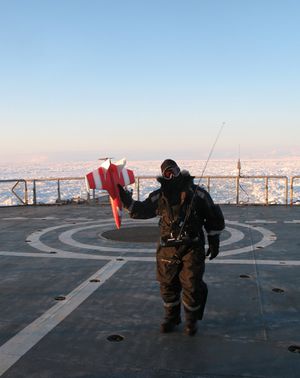 Funjet on the helicopter deck Scientists from the Geophysical Institute of the University of Bergen/Norway flew Paparazzi controlled Funjet aircrafts equipped with meteorological sensors in the Arctic sea around Spitsbergen only with the help of a RC safety pilot and no Paparazzi team member nearby. They took off and landed on the helicopter deck of the Norwegian icebreaking coast guard vessel KV Svalbard for one week and set a new Paparazzi low temperature record by flying at around -20°C and 15m/s wind in altitudes up to 1500m. For another two weeks they also collected data on Spitsbergen near Longyearbyen. See pictures in the gallery and a video.
|
March 15, 2008
|
|
A number of vendors are now offering assembled and unassembled autopilots, sensors and accessories. The software is written, the hardware is built, what are you waiting for? Getting started has never been easier! More details on the Get Hardware page.
|
February 6, 2008
|
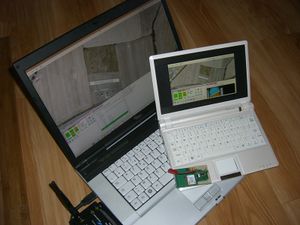 Paparazzi running on eeePC Looking for a small, light and cheap ground station ? Paparazzi runs on the ASUS eeePC out of the box (after installing the Debian Paparazzi packages). Tested on the pre-installed Xandros distribution, on a standard Ubuntu and on the preconfigured eeeXubuntu.
|
January 27, 2008
|
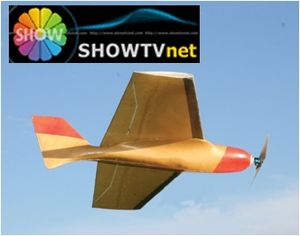 Paparazzi's Storm on TV in Turkey |
December 27, 2007
|
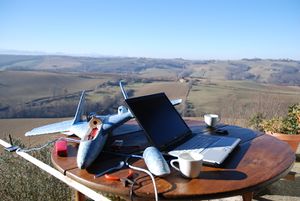 Paparazzi Control Station next to Toulouse, France |
December 13, 2007
|
| The new Tiny 2.1 autopilot nicely flew in a Funjet for the first time.
|
September 21st, 2007
|
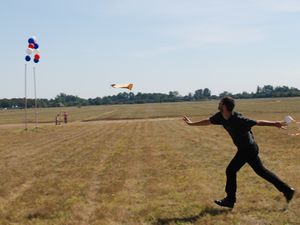 Antoine launching the Storm1 MAV 07 was yet another great success for the project! Paparazzi teams took 1st, 3rd, 4th, and 5th places in the outdoor autonomous surveillance competition and were honored to share the 1st place award with the very well designed Micropilot-equipped 48cm Ping Wing from Linköping University in Sweden.
The first Paparazzi helicopter, Twisted Logic proved that a passively stable helicopter could operate well in mild outdoor winds and also took 2nd place in the indoor competition, surpassed only by the "Father of passively stable helicopters", world famous Petter Muren of Proxflyer and BladeRunner fame.
The team of Christian Lindenberg and (fake) Martin Müller also won the special award from the jury for it general performance and fair spirit.
|
September 17th, 2007
|
| MAV 07 will be held in Toulouse, France (of course!) September 17-21, 2007. Expect to see lots of great Paparazzi systems kicking ass and taking names!
|
August 28, 2007
|
| Dr. Paul MacCready, legendary aeronautical engineer and founder of Aerovironment, died in his sleep at the age of 81. Many of us met him met him in 2005 at MAV05 in Germany but all of us are familiar with his incredible body of work ranging from the first human powered aircraft, to the GM Sunraycer electric car, and the world altitude record holding Helios. MacCready was a world champion sailplane pilot, holds a Cal Tech Ph.D. in aeronautics, has been granted 7 honorary degrees, and has contributed a total of 4 aircraft and one car to the permanent collection of the Smithsonian Institution. He founded Aerovironment in 1971, the world's largest supplier of hand-launched UAVs.
|
August 21th, 2007
|
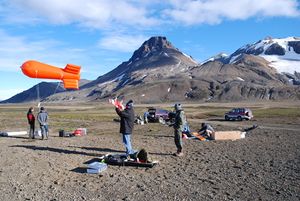 Flying south west of the Hofsjökull glacier |
March 1st, 2007
|
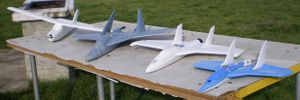 Part of the ENAC multiplex foamy fleet |
February 5th, 2007
|
|
Jeremie Vacher, a student at ENAC, has developed a tracker for antennas. It is functionnal but still needs a little bit of polishing. Anybody interrested ?
|
December 7th, 2006
|
|
Antoine continues to make great progress toward the holy grail of 17 state inertial navigation and releases a video showing the performance of the 7-state Kalman filtered IMU providing the attitude-heading reference system (AHRS) on his quadrotor. Note how much coffee was consumed in preparation for this video. More info on the IMU is available on the sensors page. Also, be sure to admire the schematics and source code!
|
November 28th, 2006
|
 Michel Gorraz launches the Dragon Slayer for the ENAC team Two Paparazzi teams, ENAC/Miraterre and Martin Mueller/Christian Lindeberg won 2nd and 3rd place at the MAV06 competition. Unfortunately, both teams had insufficient video resolution to identify the 1.5m ground target required for high-scoring and the winning prize went to Bringham Young University who was able to identify 2 of the 3 targets with a Panasonic KX-141 camera and an unusually narrow 30 degree FOV lens. The Bringham Young team used the Procerus Kestrel autopilot (originally developed at the university) and obviously practiced video target recognition much more than the rest of us.
Flight performance and navigation for both Dragon Slayers and the Black One was exceptional as usual. All planes performed flawless autonomous takeoffs and landings and the Slayer performed an autonomous paintball drop with wind-corrected precision that put the ball within 3 meters of the designated target from an altitude of 40 meters in a 5 m/s wind. As luck would have it, the stress of managing two aircraft from a single ground station during an intense competition, aggravated by a misbehaving GPS in one of the planes that required a power and flight-plan reset just prior to launch resulted in us neglecting to re-input the target coordinates and the ball was dropped accurately on the default target location, not the actual target location provided by the judges just prior to flight.
|
| See the complete MAV06 Photo Gallery
|
| See you next year in Toulouse for MAV07.
|
2003 - 2006
|
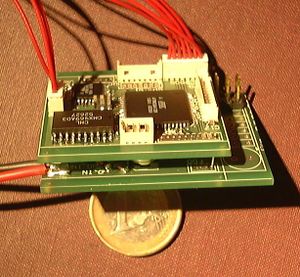 Paparazzi 1.2.1, the first complete, presentable version of the now famous autopilot |
|
